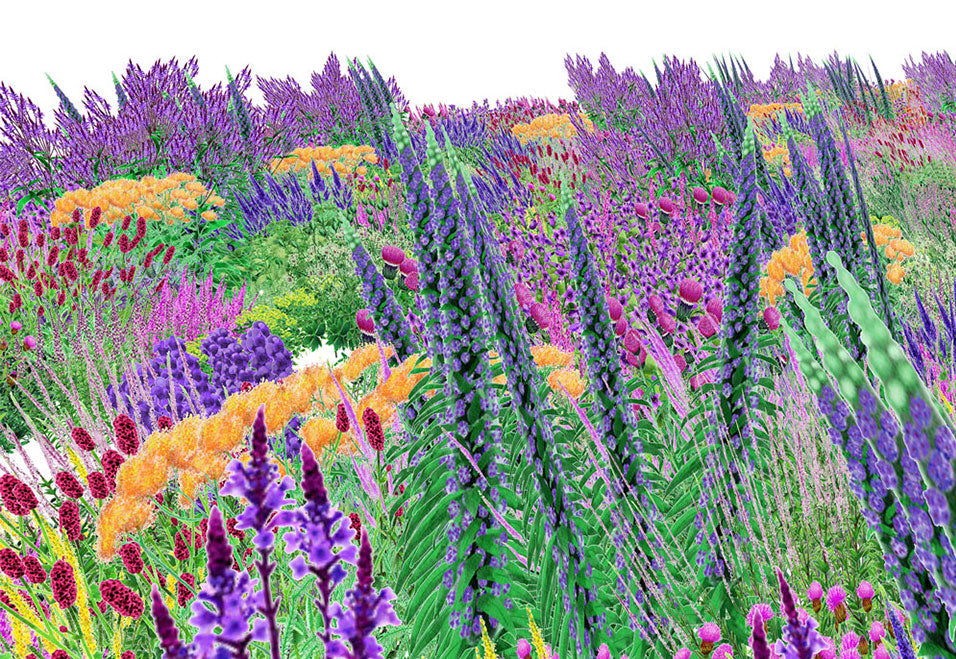As herbalists, gardeners, and earth stewards, we plant for healing—ours, our communities’, and our ancestors’. But in this pursuit of human wellness, how often do we pause to consider the creatures that make healing itself possible?
Bees, butterflies, moths, beetles, and even the humble hoverfly play silent, sacred roles in our apothecaries. They pollinate the very herbs we tincture, dry, and infuse. Without them, the medicine simply doesn’t come.
Yet modern landscapes—often stripped of wildness, saturated with pesticides, and obsessed with “clean” order—threaten pollinator habitats. As herbalists, we must become more than gardeners; we must become advocates, protectors, and providers.
A Living Apothecary: What It Means to Garden for Pollinators
A pollinator-friendly apothecary isn’t just a pretty garden—it’s a living, breathing ecosystem. It considers not only the human needs of medicine-making, but the ecological needs of the plants and creatures that enable those medicines to exist at all.
When you plant with pollinators in mind, you’re ensuring:
-
Better herb yields and vitality. Pollinated herbs are more robust, aromatic, and nutrient-rich.
-
Biodiversity in your garden. Pollinators attract birds, beneficial insects, and bring balance.
-
A resilient herbal future. Many medicinal plants rely on pollinators for reproduction—meaning long-term seed saving and sustainability also depend on their presence.
Meet the Herbal Allies of Pollinators
Some of our most beloved herbs are also irresistible to pollinators. Here are four standouts to incorporate into any pollinator-friendly apothecary:
1. Borage (Borago officinalis)
-
Pollinator appeal: A true bee magnet, especially for bumblebees.
-
Medicinal use: Cooling and moistening; supports adrenal function and reduces inflammation.
-
Cultivation tips: Self-seeds generously, thrives in poor soil, and blooms prolifically from early summer onward.
Bonus: Its edible blue flowers also make stunning garnishes for teas and salads.
2. Lavender (Lavandula spp.)
-
Pollinator appeal: Bees and butterflies adore the long bloom period and rich scent.
-
Medicinal use: Calming, nervine, antimicrobial; excellent in teas, salves, and infused oils.
-
Cultivation tips: Requires full sun, well-drained soil; thrives in dry climates.
Note: Avoid over-pruning—let some spent flowers go to seed for wildlife.
3. Thyme (Thymus vulgaris)
-
Pollinator appeal: Its tiny, nectar-rich blooms are critical for early-season pollinators.
-
Medicinal use: Antimicrobial, warming, excellent for respiratory infections.
-
Cultivation tips: Low-growing, drought-tolerant, and great for borders and rock gardens.
Pro tip: Let it flower! Many gardeners harvest before blooms, but flowering thyme is vital for pollinators.
4. Echinacea (Echinacea purpurea)
-
Pollinator appeal: Especially attractive to butterflies and native bees.
-
Medicinal use: Immune modulator, lymphatic support, classic herbal remedy for cold and flu season.
-
Cultivation tips: Needs full sun, tolerates poor soil; blooms late summer through fall.
Seedheads also feed finches and songbirds—leave them up through winter!
What to Avoid: Common Practices That Harm Pollinators
While planting pollinator-friendly herbs is powerful, how we garden matters just as much as what we grow. Here are key tips to avoid harm:
Avoid Pesticides, Herbicides & Fungicides
Even “organic” pesticides can harm bees, especially during their larval stages. Never spray flowering plants, and seek natural pest management methods like companion planting and soil health.
Avoid Over-Tidying the Garden
Pollinators need mess: dead stems, undisturbed soil, leaf litter. These are nesting sites, overwintering shelters, and sources of food.
Leave some leaf piles, old stems, and flower heads intact—even if it looks “wild.”
Avoid Monoculture
Diverse plantings feed diverse pollinators. Include a mix of annuals, perennials, native plants, and herbs with staggered blooming times for a constant nectar supply.
A Herbalist’s Pledge: One Plant for the Bees
This month, we invite you to plant just one bee-friendly herb—whether it’s a pot of thyme on your windowsill or a bed of borage in your garden. One act of planting becomes hundreds of acts of pollination.
Not sure where to start?
-
No garden space? Try lavender or thyme in a container.
-
Have a wild patch? Let the borage self-seed freely.
-
Want to invite butterflies? Echinacea is your friend.
Let this be a new ritual in your herbal practice—tending not only to healing, but to hum.
To Heal, We Must Hum
We cannot call ourselves keepers of the plants if we do not also protect the creatures that complete them. Pollinators are not ornaments in our gardens—they are kin. They are the secret ingredient in every tincture, the quiet heartbeat beneath every harvest.
So let your garden be medicine for more than just people. Let it be fragrant, blooming, messy, and full of song. Let it be a haven, a refuge, a buzzing sanctuary.
Because true healing is not silent—it hums.
“Medicinal gardens must hum, not just heal.”

